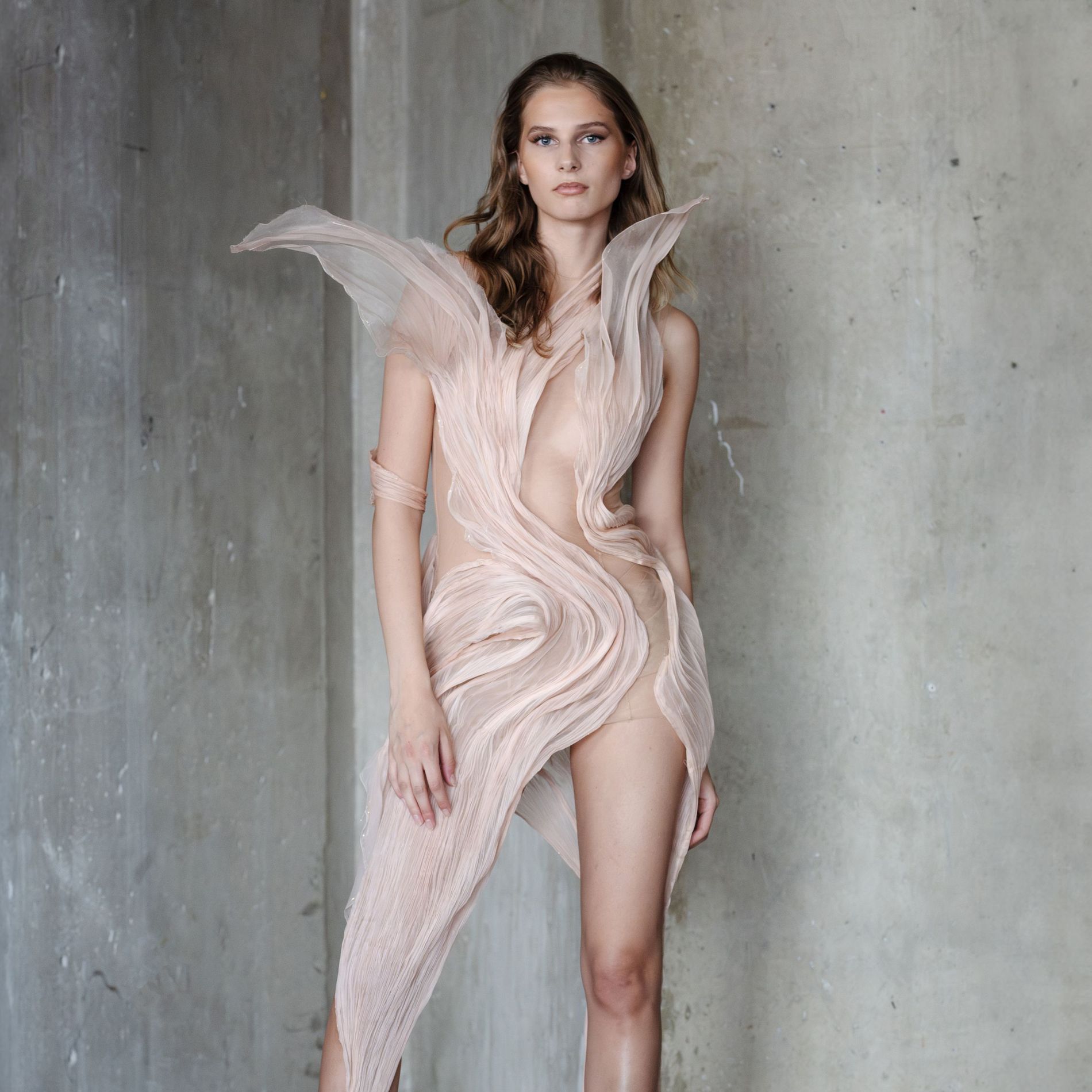With an approach to fashion as an artform honed under the tutelage of Iris van Herpen and Beckmans College of Fashion, newly-crowned NK Young Talent Award winner Rasmus Georgiadis is emerging as Swedish fashion’s next visionary
Each year, the NK Young Talent Award by Beckmans shines a spotlight on the brightest rising star in Swedish fashion. And this year, that star is burning particularly bright with winner Rasmus Georgiadis – the freshly graduated designer whose poetic vision and technical precision have captivated the Swedish fashion scene.
Unveiled during Stockholm Fashion Week, Georgiadis's winning collection, A Flourishing Confluence, is an exploration of beauty at the intersection of art, body and nature. Shown in an exclusive exhibition at NK Stage in central Stockholm, the sculptural silhouettes – a masterful blend of laser-cut fabrics, 3D printing and hand-pleating – reveal a designer already fluent in a language all his own.
Raised in the small town of Tyringe in Skåne, Georgiadis’ journey into fashion began not in textiles, but in art. “I was always drawing,” he says. “It started with an obsession with detail – how a line could suggest movement or a mood.” That early artistic curiosity evolved into a fascination with how clothing interacts with the human form. For Georgiadis, garments are not simply designed around the body, they become part of it. “The body itself is always part of my creative process,” he explains. “By following the lines of anatomy, or figuring out how the body and the garment could seem to merge together and become one, with fabric illusions and extended materials out of the natural shapes of the body.”
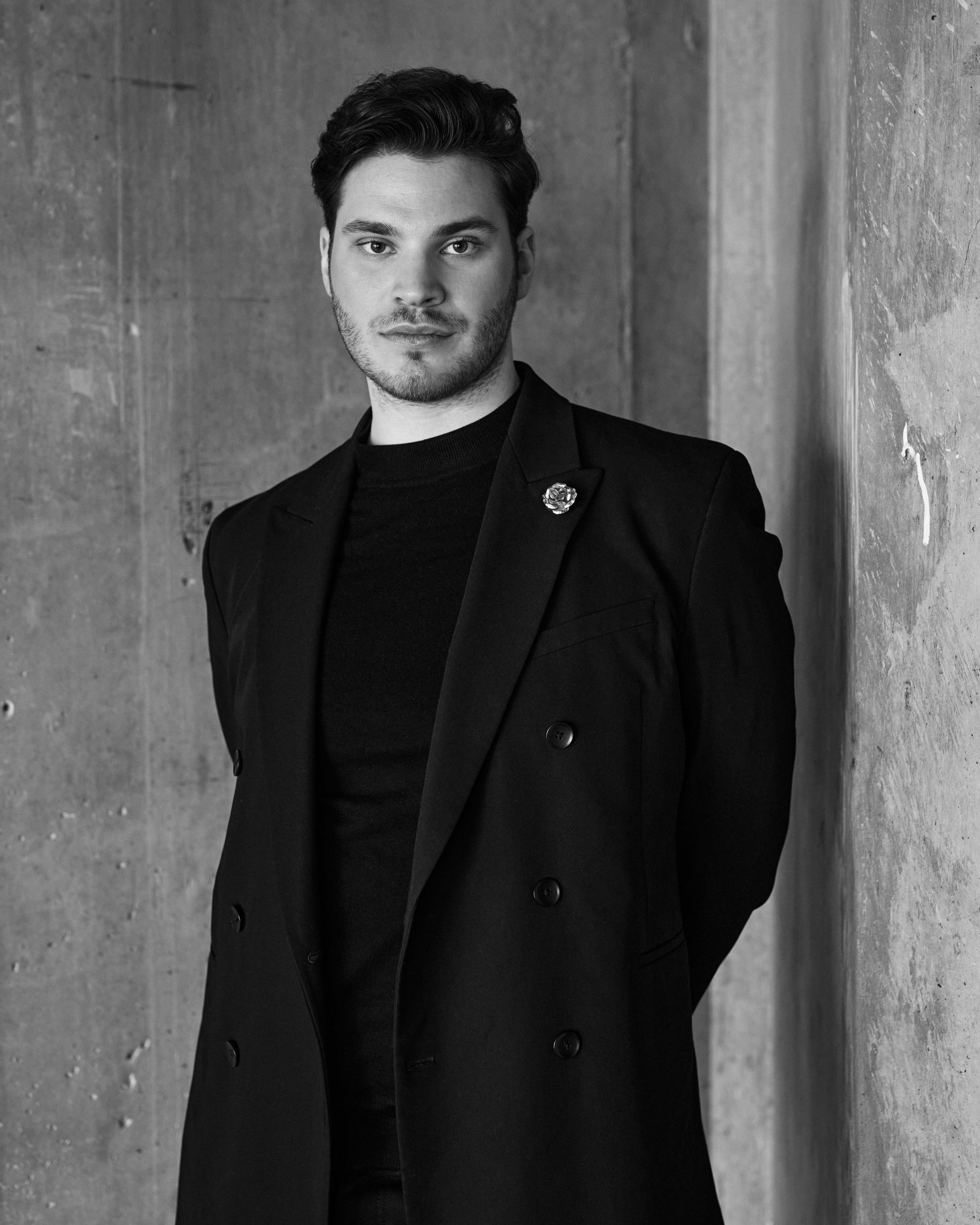
Rasmus Georgiadis has been crowned NK Young Talent Award winner.
That expression comes to life in A Flourishing Confluence, a collection rooted in Georgiadis’s deep dive into Art Nouveau. “I looked at how the movement is represented in prints, book covers, interiors…" he explains. “I started sketching organically, letting shapes come naturally, and then used my technique repertoire, 3D printing, laser cutting, embroidery, to give them varied, tactile expressions.”
Romantic yet futuristic, the garments reference ornamental ironwork, swirling lines and botanical architecture. “I’ve always been captivated by the romance and elegance of Art Nouveau and Rococo – the colour schemes, the embellishments, the artistic flow,” Georgiadis says. “Ornaments and metal work in particular caught my eye. One sketch of lines eventually became a 3D-printed shape added to the body as a wearable art constellation.”
I’ve always been captivated by the romance and elegance of Art Nouveau and Rococo – the colour schemes, the embellishments, the artistic flow.
Rasmus Georgiadis
The technical prowess behind it is not incidental. During his studies at Beckmans College of Design – the Stockholm-based institution that has long fostered the country’s most exciting fashion voices – Georgiadis honed a multidisciplinary approach, one that melds craftsmanship with innovation. Training with Iris van Herpen in Amsterdam deepened this vision, exposing him to the possibilities of fashion as an artistic medium. “Interning at Iris was such an amazing experience,” he reflects. “To actually come close to pieces that seem impossible to make – and then learn the secrets behind the silhouettes and forms – was incredible. I got to work on everything from intricate collection pieces to custom orders for private clients and celebrities.”
What shaped him most, though, was the freedom to explore. “I was given a lot of responsibility in new areas, like material-making and manipulation techniques. It opened my eyes to not take a material for what it is, but for what it could become – to play with combinations that create shapes otherwise impossible to achieve.” Now, his approach draws comparisons to the namesake designer of his Iria van Herpen internship experience, and not without merit. With his sculptural silhouettes and detail-rich designs, Georgiadis may just be the next van Herpen – but with a distinct voice.
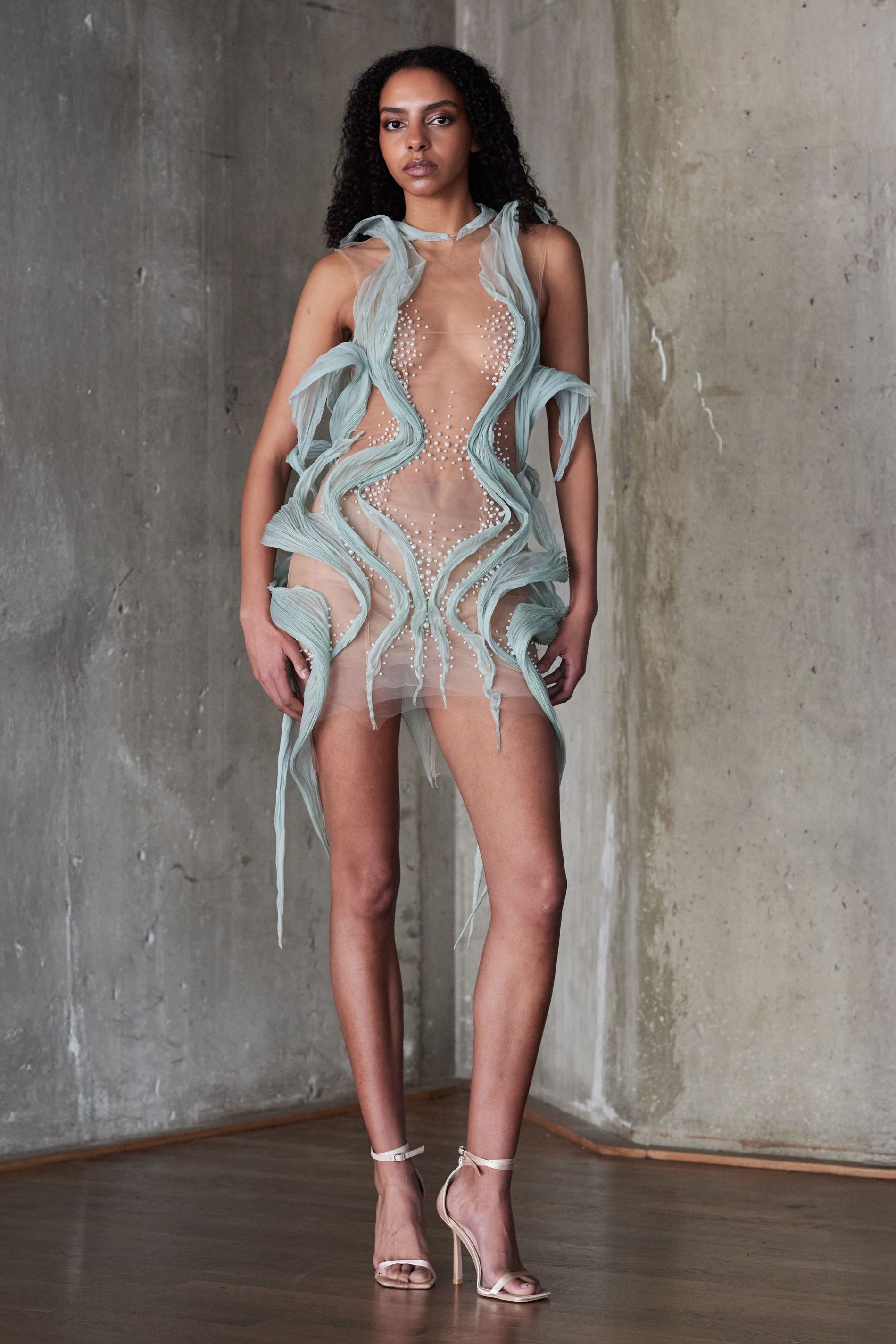
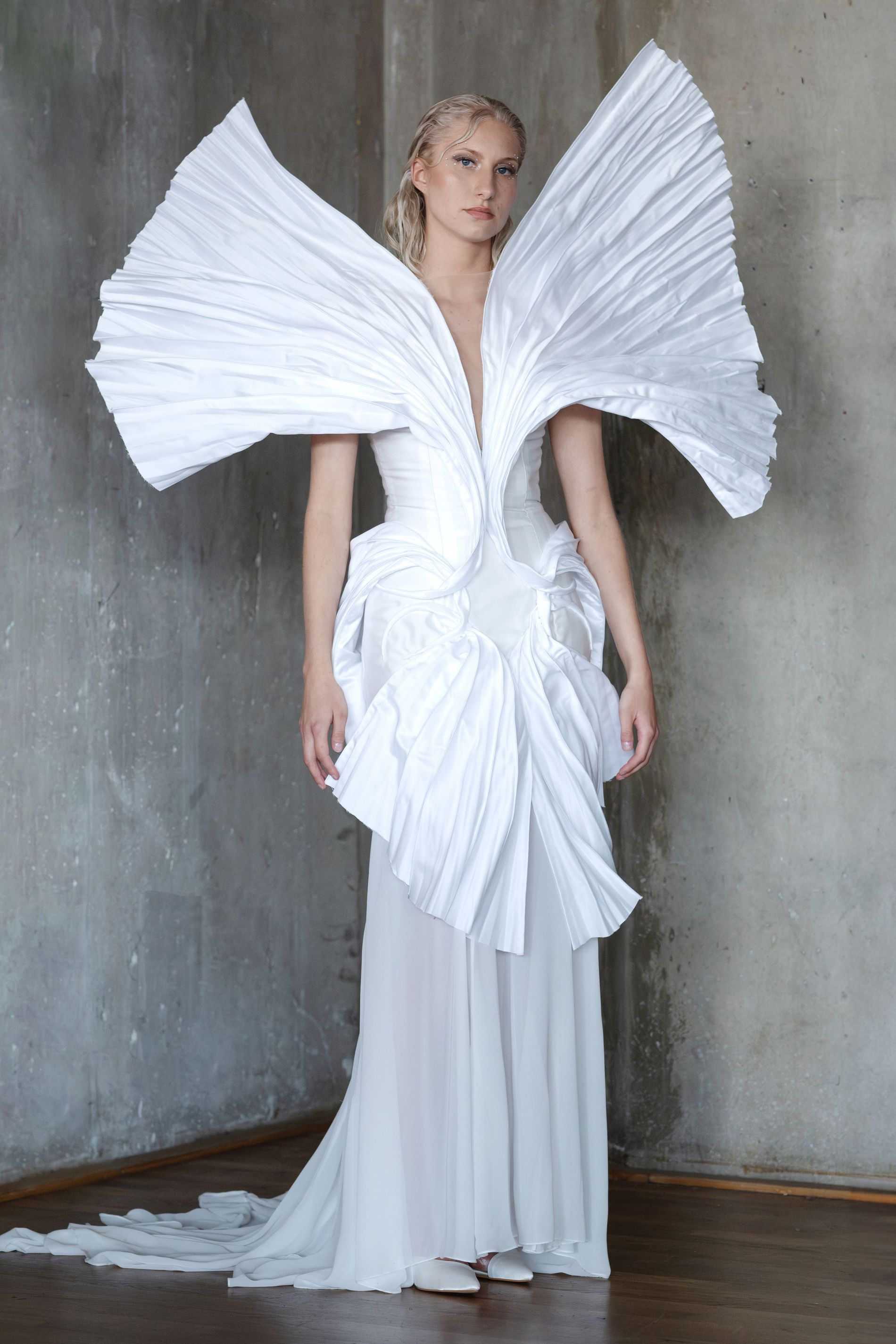
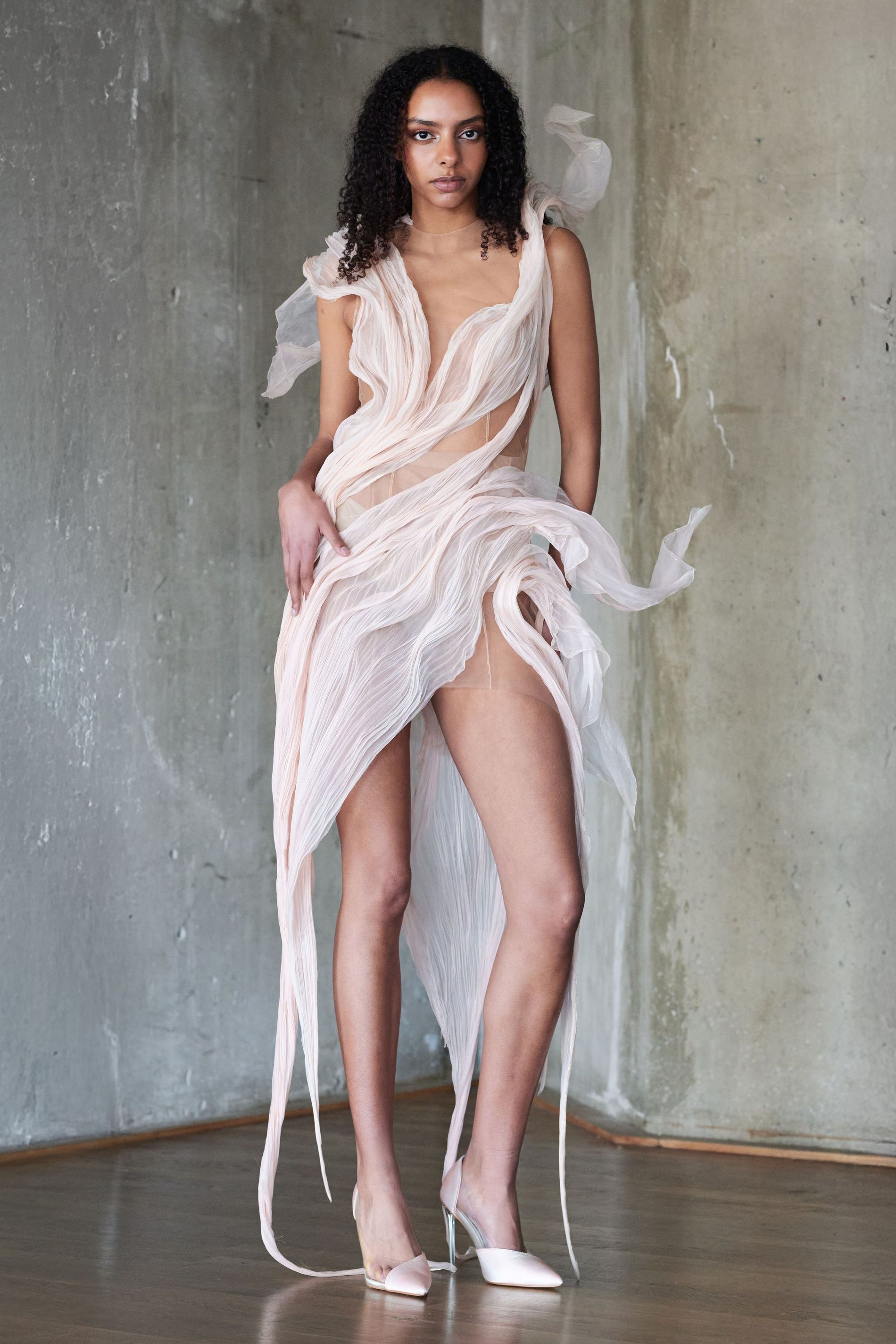
Now, that voice is being heard loud and clear. “I remember back in 2023, I had just arrived in Amsterdam and watched singer Olivia Lobato take the stage at the Grammis wearing my pearl-knitted dress. It was the first time I saw someone wear my clothes on television. To see it move was so rewarding,” he says. “And when Caroline Winberg, a childhood idol, wore one of my dresses at the ELLE Gala – that was surreal. It’s in those moments you see if the concept really reaches out. That plisséd dress looked like it was growing out of her body.”
With the NK Young Talent Award comes further recognition and reach. “To be recognised for my design means the world,” Georgiadis says, “since it is something so personal and what I truly care about. To be acknowledged and get the possibility to reach a wider audience really feels life changing. It is motivation to keep growing, knowing I am on the right track.”
“The award is about more than recognition,” adds Pär Engsheden, head of the fashion program at Beckmans and member of the award jury. “It’s a launchpad. To have your work showcased at NK, during Stockholm Fashion Week, sends a powerful message – that your vision matters.” That sentiment is echoed by Karin Wickberg, Marketing Manager at NK. “This award is about fostering creativity and cultural expression,” she says. “Rasmus is the perfect example of what the next generation of Swedish designers can offer – thoughtful, boundary-pushing, and deeply aware of how fashion can connect with people on an emotional level.”
I want to dress people who resonate with my vision and make them feel like their best selves
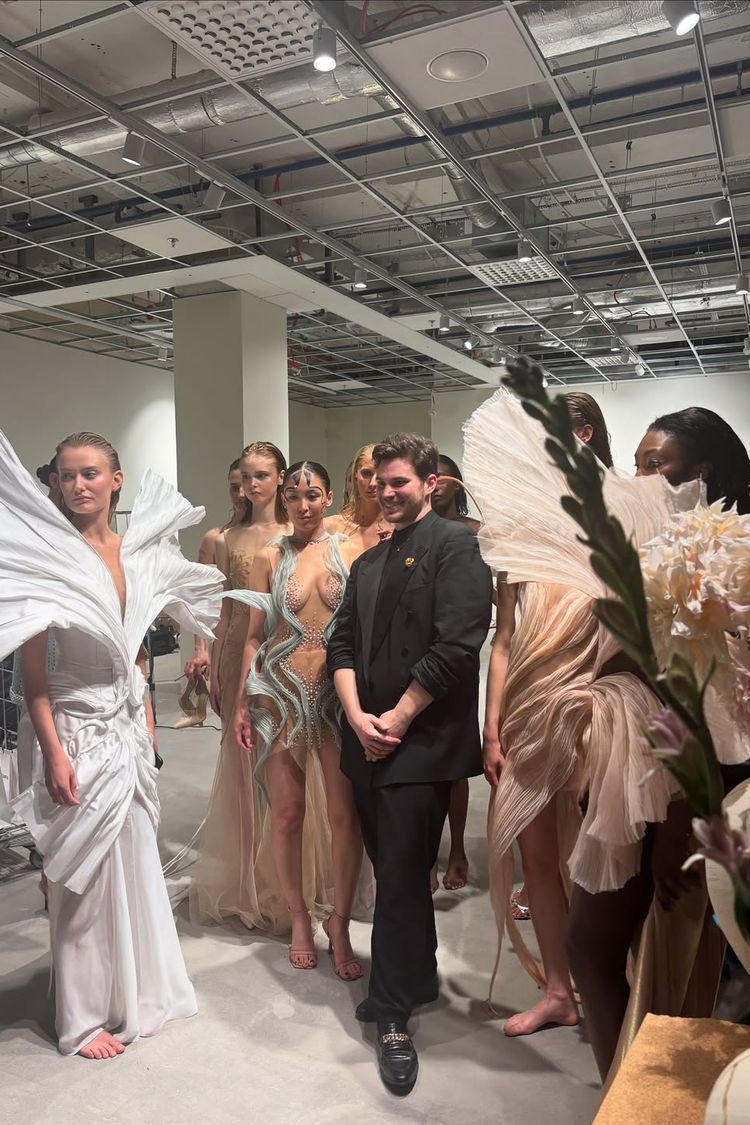
Rasmus Georgiadis with models at his A Flourishing Confluence runway show at Stockholm Fashion Week.
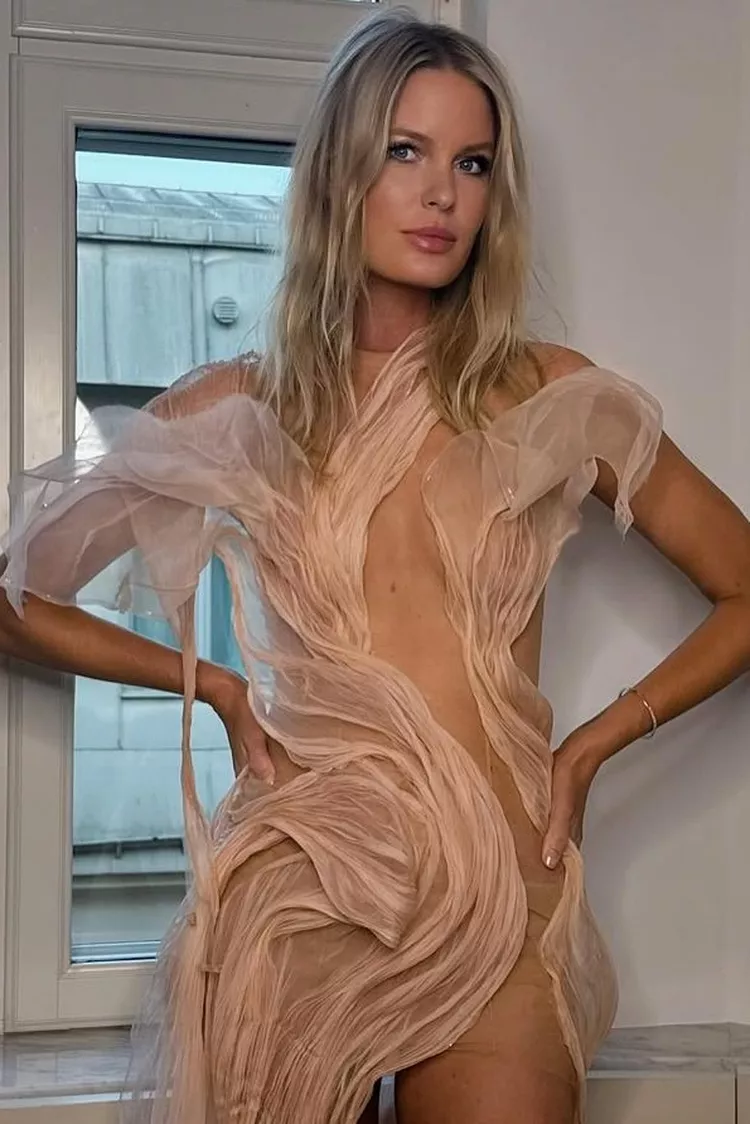
Swedish supermodel Caroline Winberg wearing the Fluidity dress by Rasmus Georgiadis.

And with Stockholm Fashion Week now back in full force after a period of relative quiet, the timing could not be more potent. “We need new voices,” says John-Jamal Gille, Project Director of ASFB. “Designers like Rasmus are exactly who we want to see take up space, reshape the narrative, and challenge what Swedish fashion can be.”
For Georgiadis, this moment is both culmination and beginning. His designs may feel otherworldly, but his focus remains grounded in connection – between material and memory, garment and body, creator and wearer. “Every detail, every shape and texture,” he says, “is there to convey something. I want people to feel the care and emotion behind what they’re wearing.”
